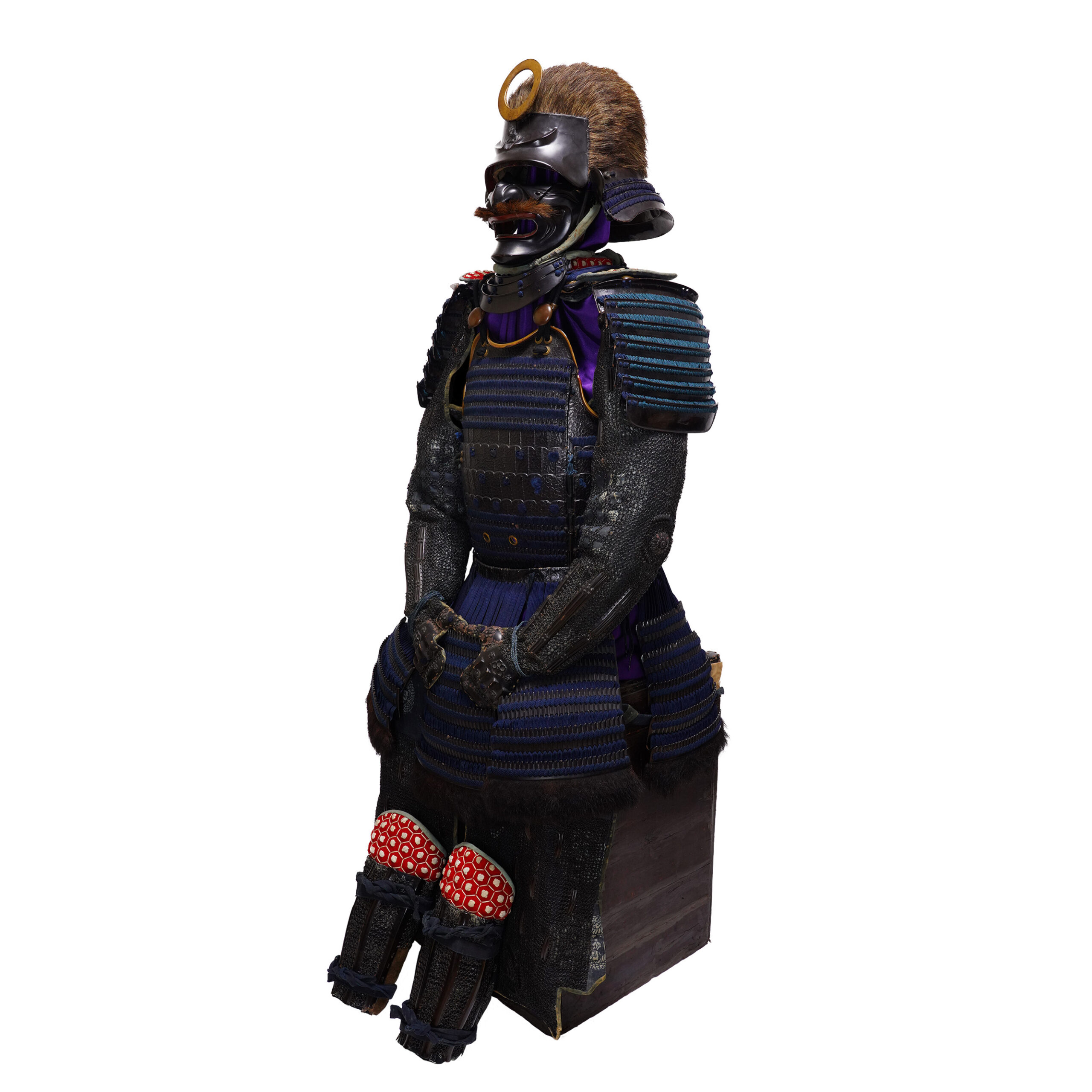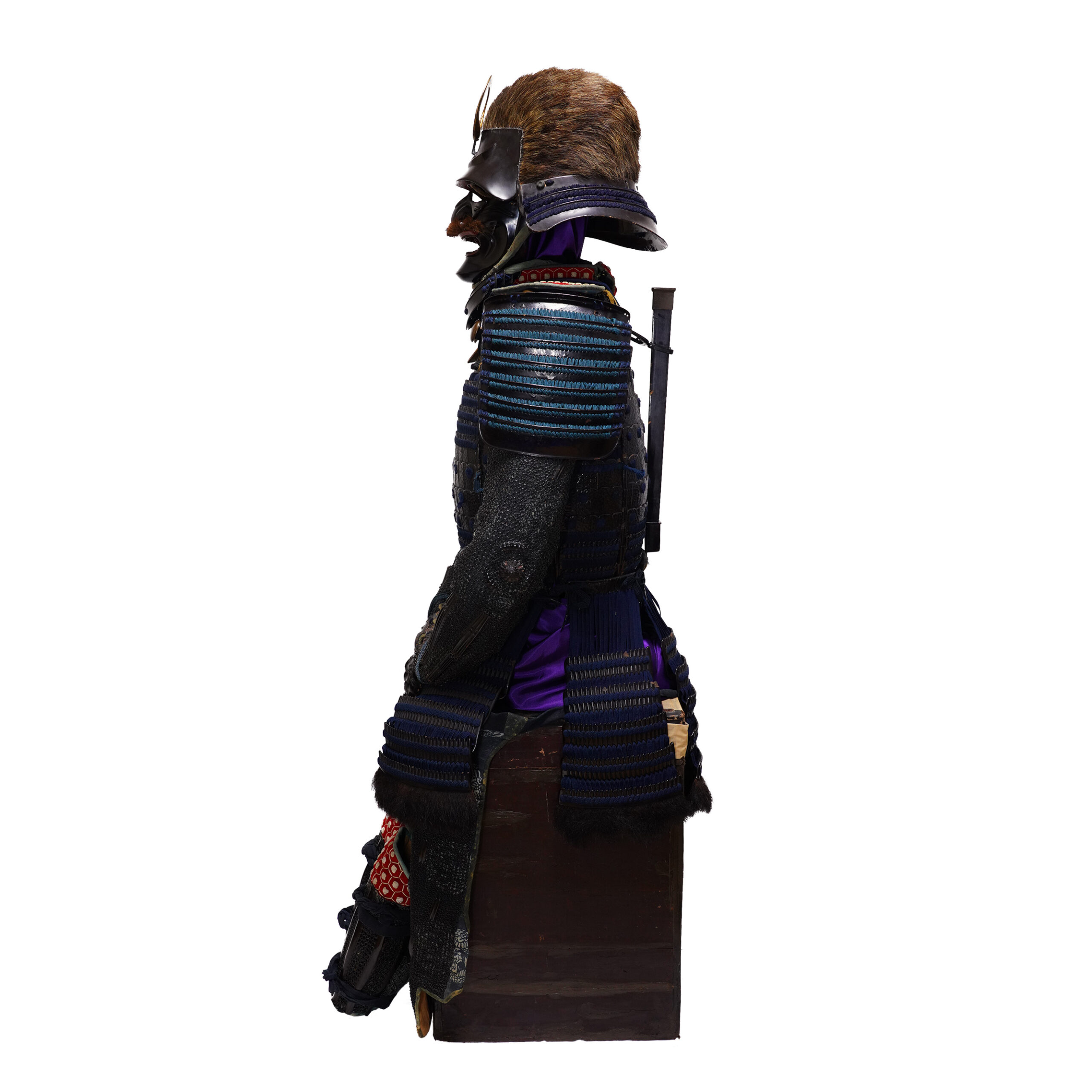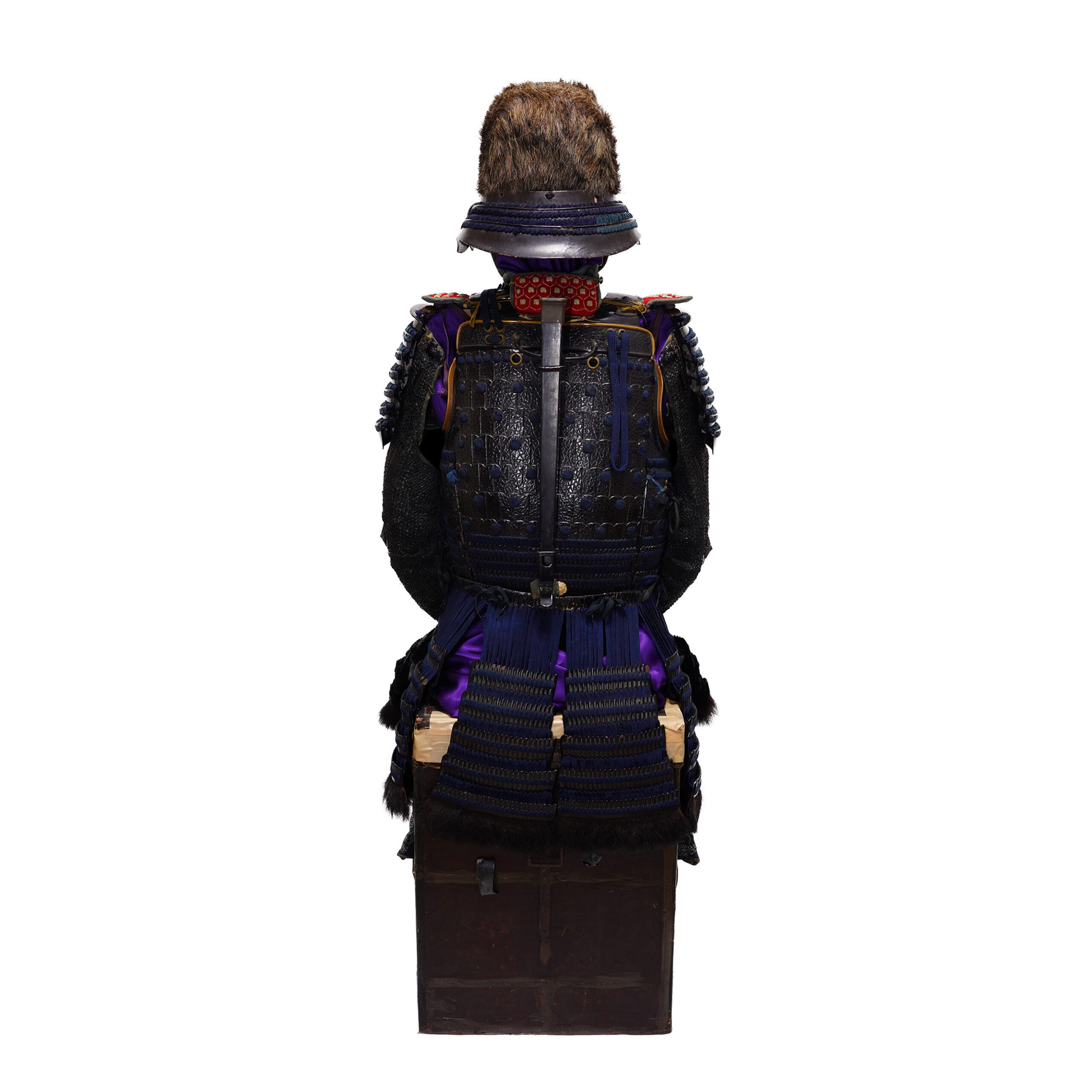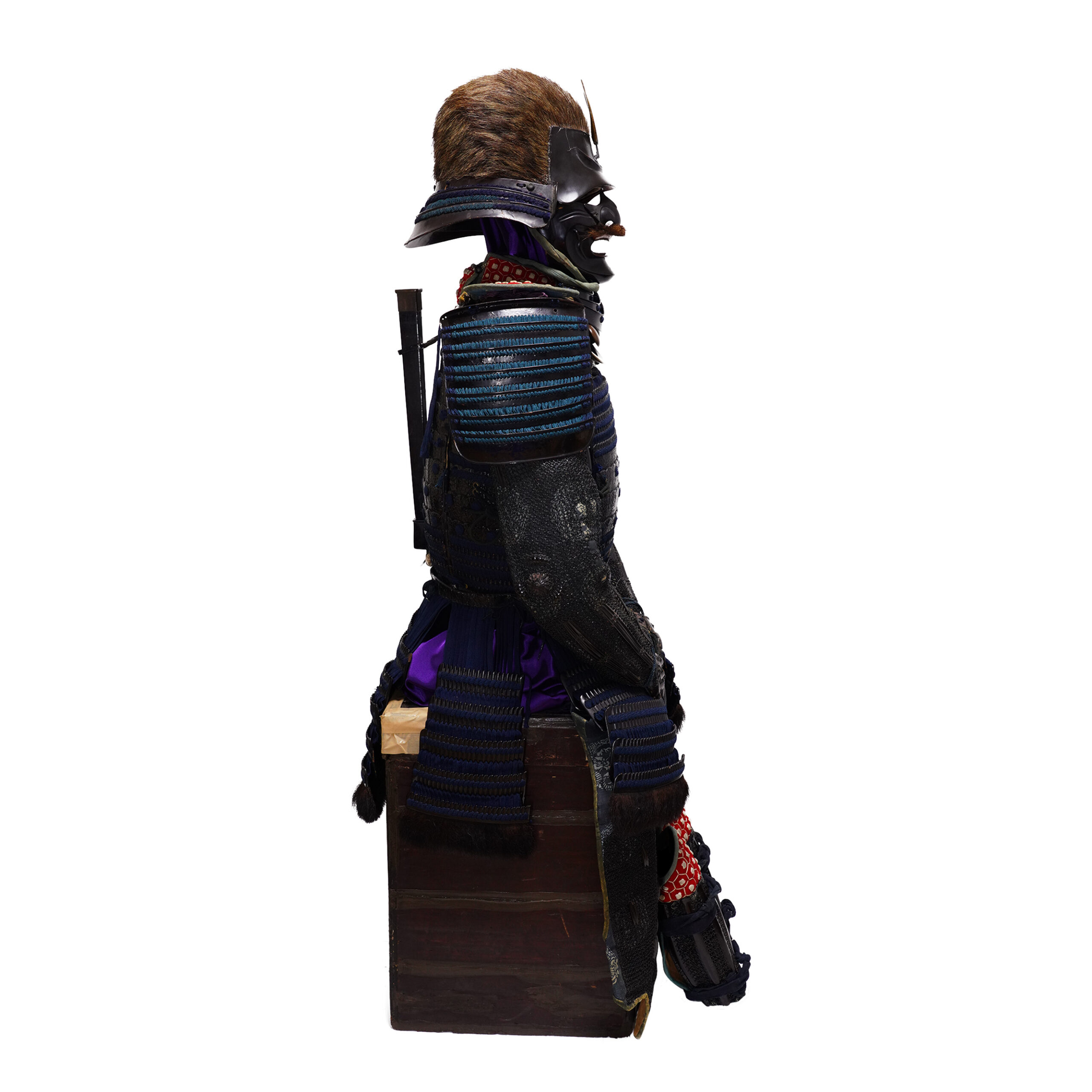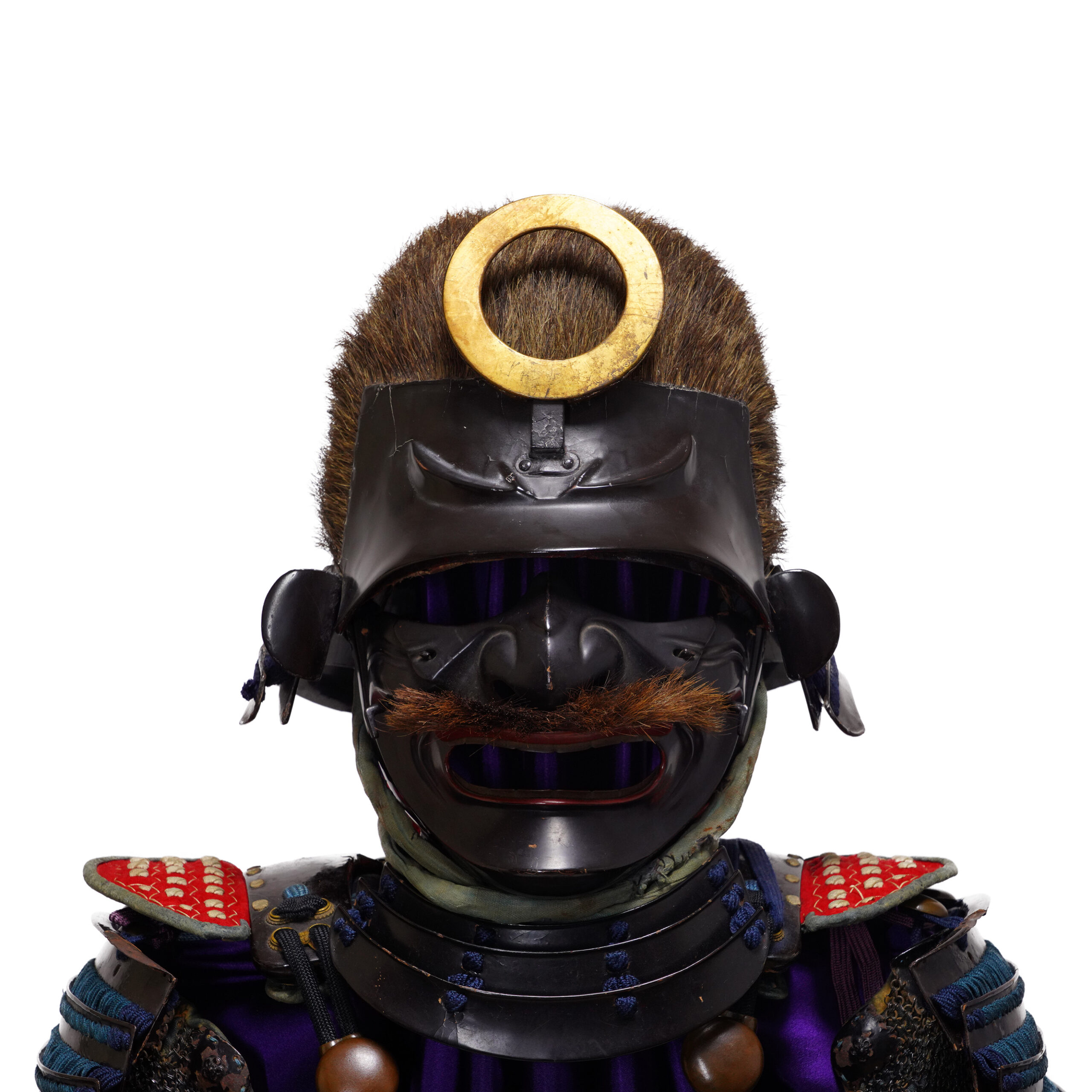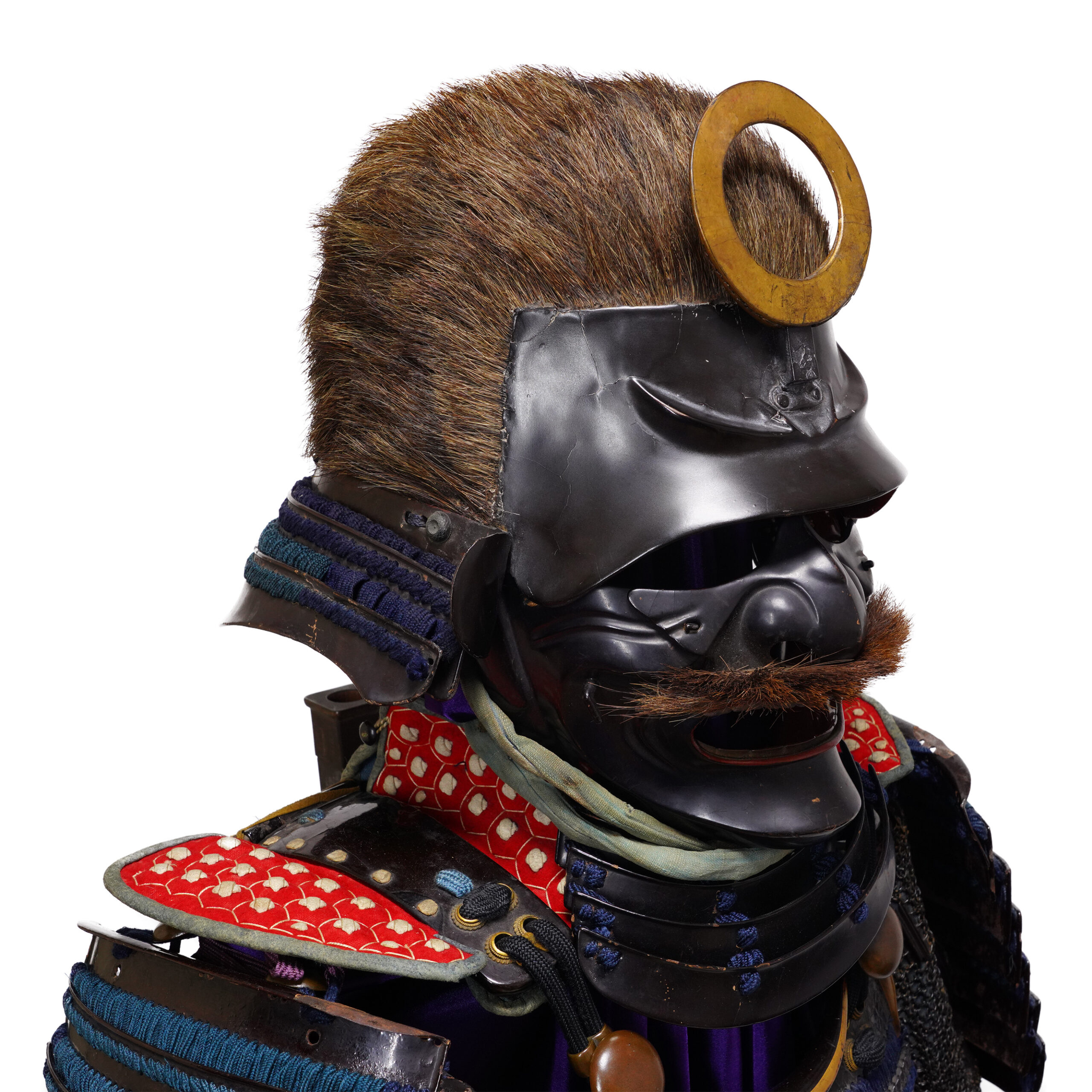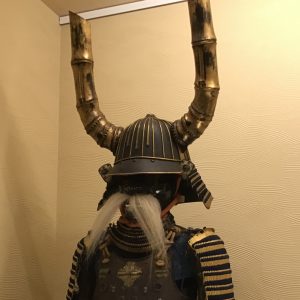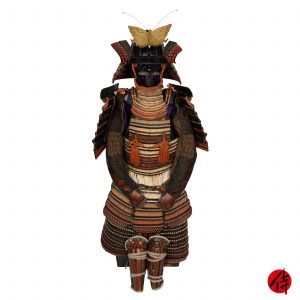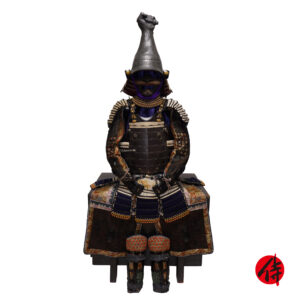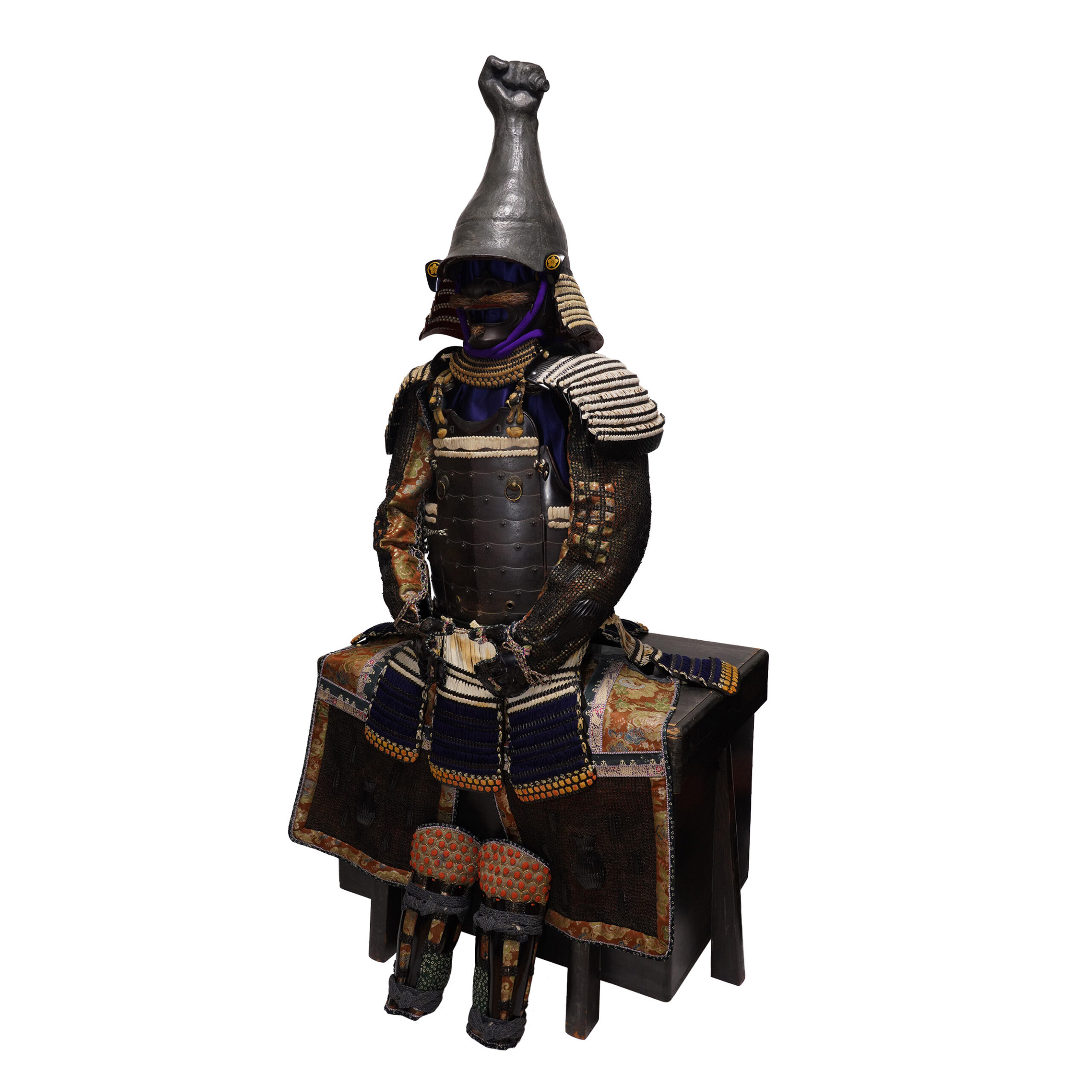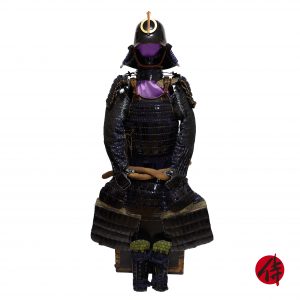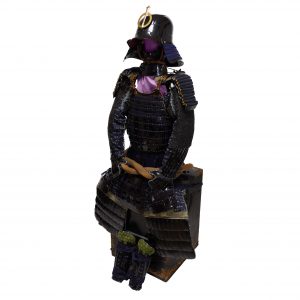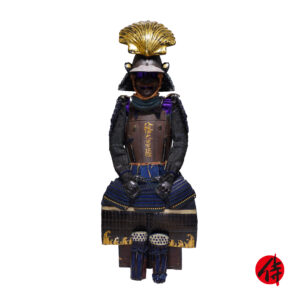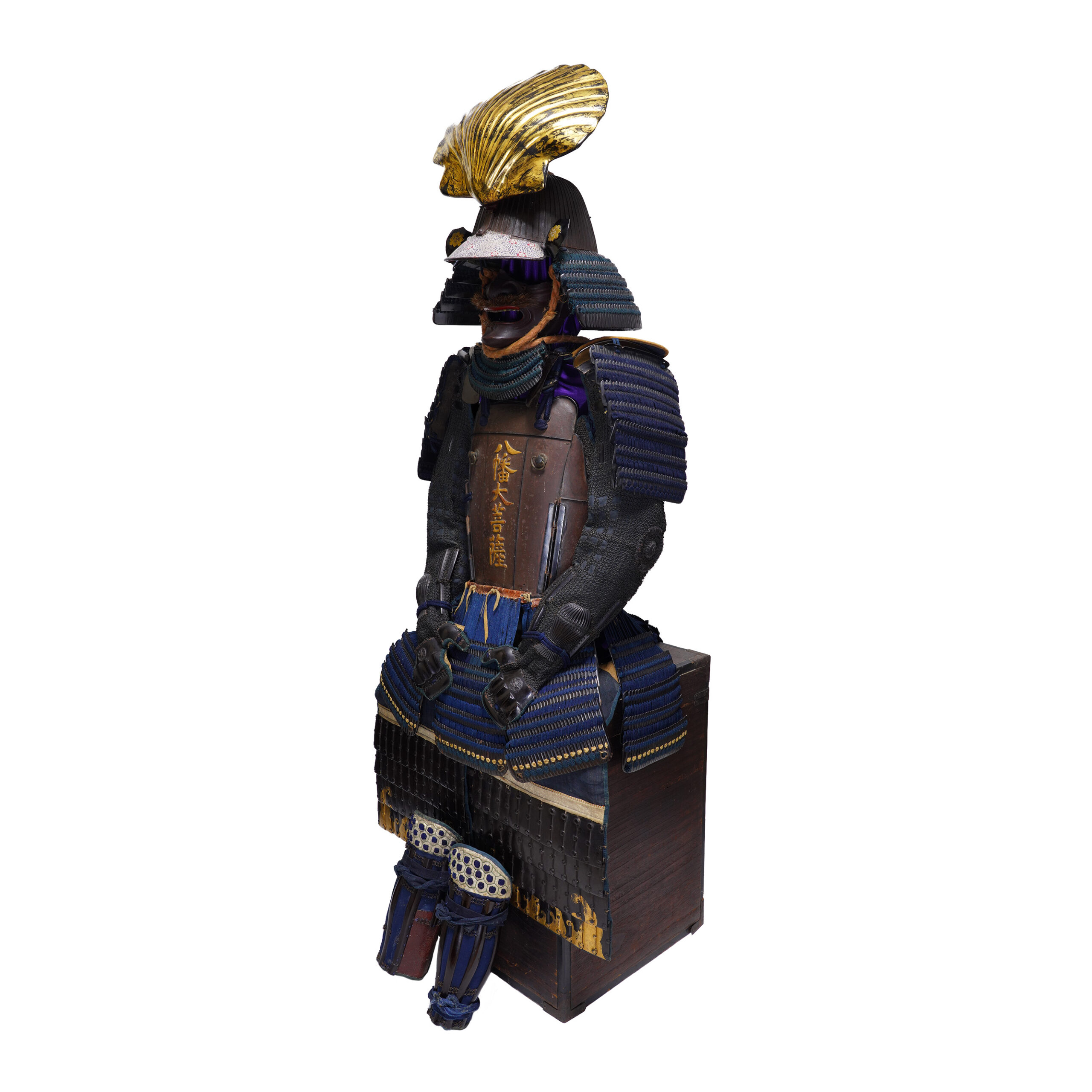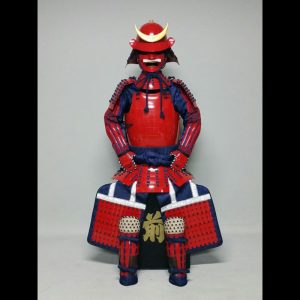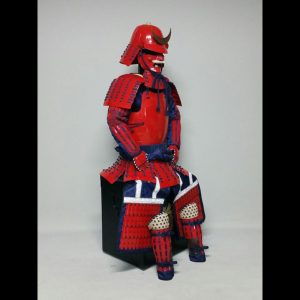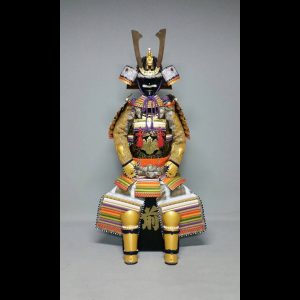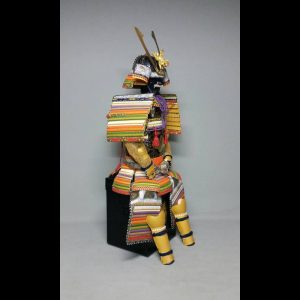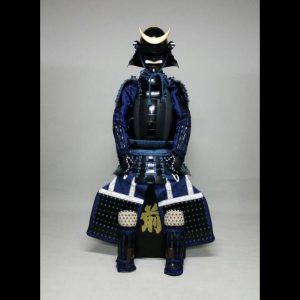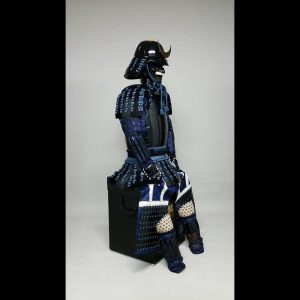Antique Edo Period Samurai Armor Tokubetsu Kicho Shiryo Certificate (A-25)
Period: Mid Edo Period
appraised by The Association for the Research and Preservation of Japanese Helmets and Armor

Kabuto (helmet)
■Helmet bowl: Sougou Nari Kabuto
The Kabuto (兜, helmet) is a protector for the head. When people started using the Kabuto, it was initially designed for practical use. However, the principal purpose of its design has changed with time; Samurai tried to express their dignity, personality, or religion by wearing the characteristic designed Kabutos. According to a theory, these unique designed Kabutos were made from the late Muromachi (室町, 1467-1573) period to the Edo (江戸, 1603-1868) period. This type of Kabuto is categorized as the Kawari Kabuto (変わり兜), and a variety of materials were used to create them. For example, animal fur, seashells, plants, and papers were used as materials for decoration.
We believe this Kabuto is categorized as the Sougou Nari Kabuto (総髪形兜). This Kabuto models a human hairstyle. We think its hair part is made of yak fur. The Sougou Nari Kabuto is a kind of Kawari Kabuto. Generally speaking, the Kawari Kabuto refers to the Nari Kabuto (形兜). It is because Kawari Kabutos model a shape (形 in Japanese) of various motifs such as animals, plants, and matters related to Shintoism and Buddhism. Kawari Kabutos were given this name because these Kabutos have strange shapes (変わり means unique, strange, etcetera in Japanese) compared to conventional Kabutos. There are two methods for making Nari Kabutos. One is Harikake (張懸), and another is Tetsu-Uchidashi (鉄打ち出し). Harikake is a technique in which multiple layers of paper are pasted on the model. After drying, the model will be removed and hardened with lacquer to create a modeled object with the same shape as the model. Tetsu-Uchidashi is a style of sculpting an object by hammering out an iron plate.
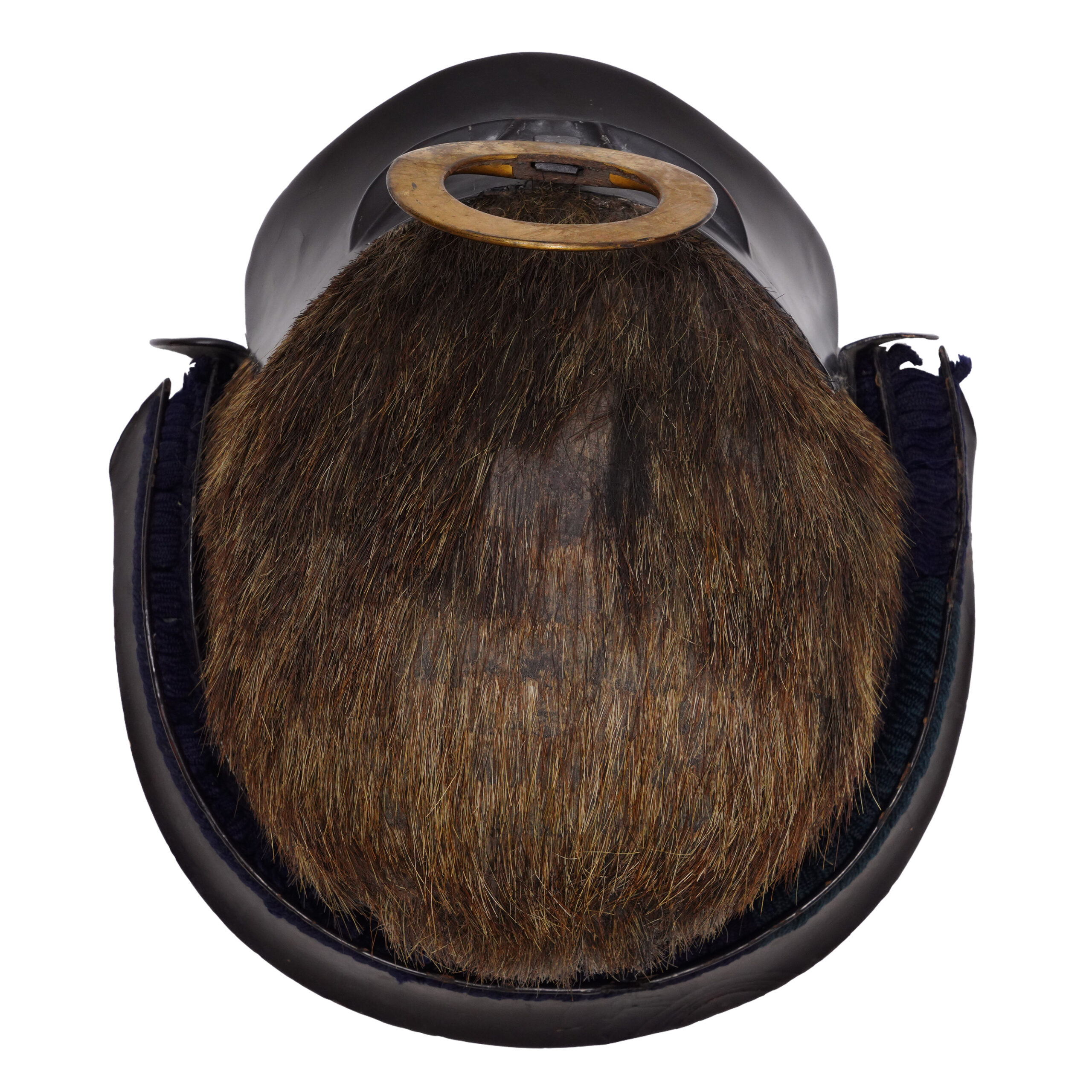
■Shikoro (side neck guard):
Iron plates laced with navy threads.
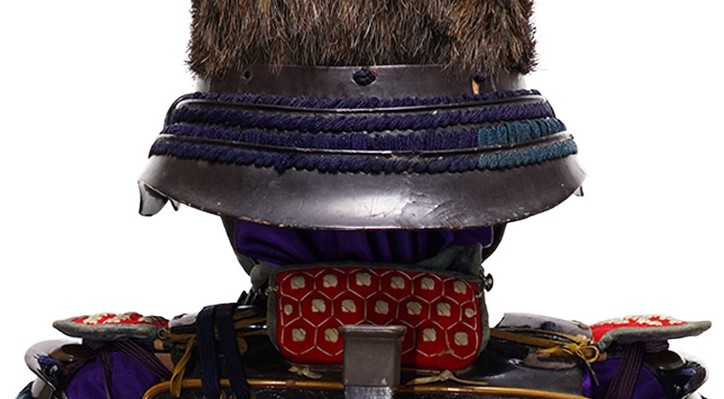
■Fukikaeshi (side neck guard):
The Fukikaeshi (吹き返し) is both ends of a Kabuto. It protects the face from swords and also shows its beautiful workmanship. Family crests are sometimes designed on this part. This Kabuto’s Fukikaeshi is relatively small and has a simple look. It might have been designed in this way to reduce weight so that the Samurai who wore this Kabuto could quickly move on the battlefields.
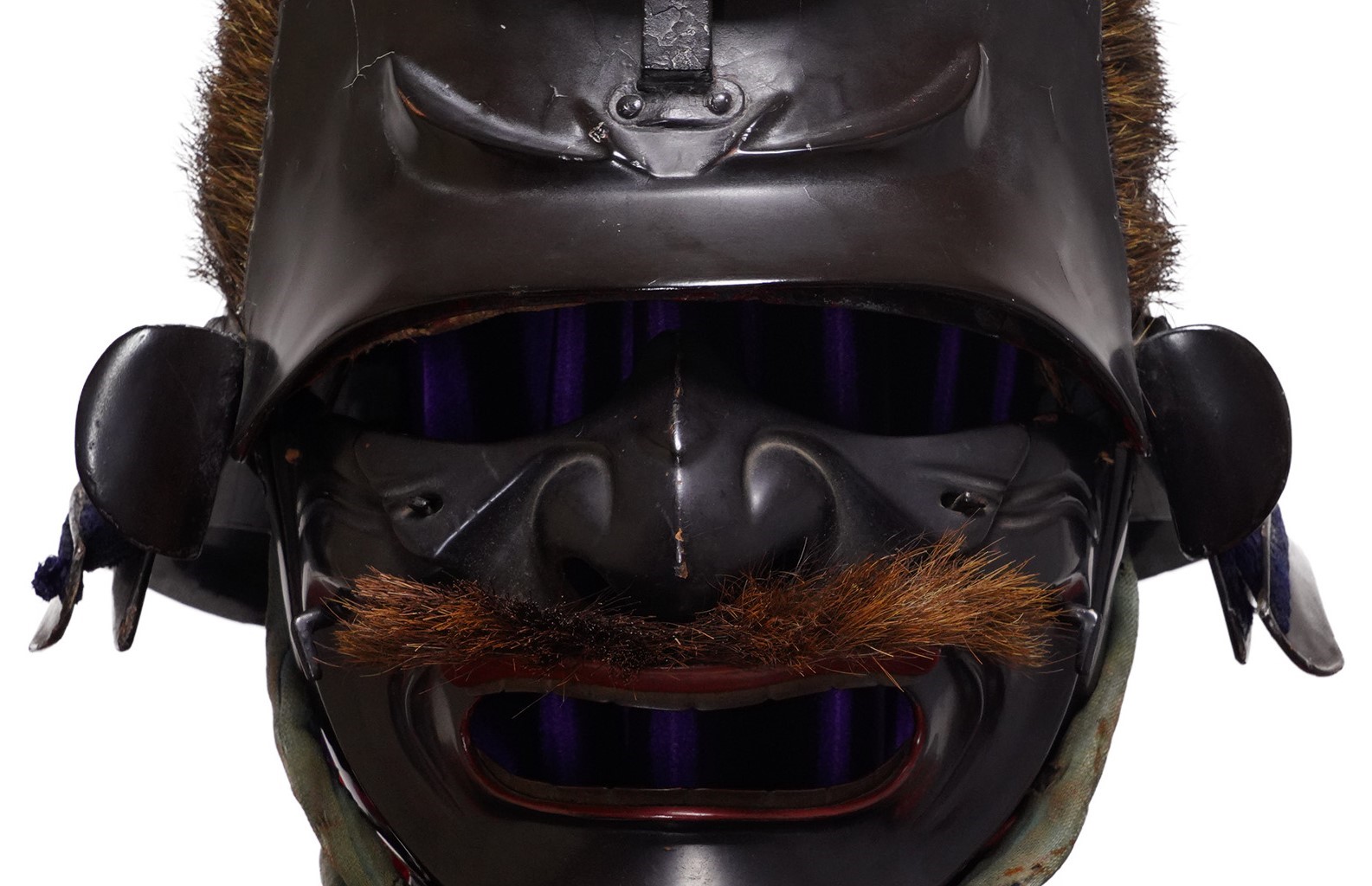
■Menpo (face guard): Ressei Menpo
Iron mask with a mustache. This type of Menpo is called the Ressei Menpo (烈勢面頬). It represents the angry face to intimidate enemies. There are many types of Menpo, depending on their shape or appearance. The purpose of Menpo was not only to protect Samurai’s face. But also to hide their true faces so that their psychological states were not affected.
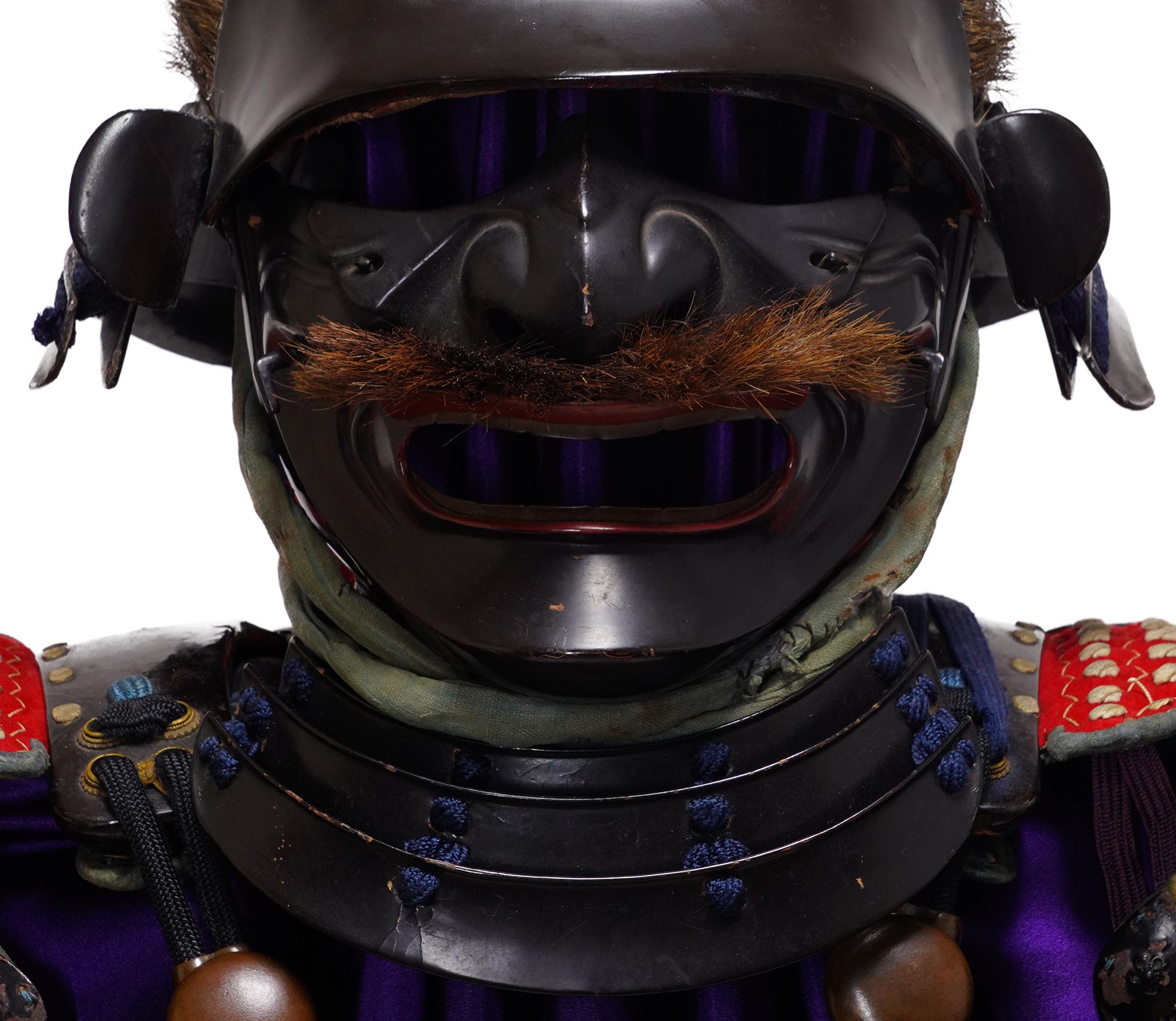
■ Maedate (Front decoration): Nichirin
The Maedatemono (前立物, front decoration) is attached to this Kabuto. We estimate the motif of this Maetate is a Nichirin (日輪, another name for the sun) or a Getsurin/Gatsurin (月輪, another name for the moon). There was a widespread belief among Samurai, the Myouken (妙見) belief. This religion was born in India. It was mixed with the Polestar belief and was brought to Japan from the continent. The sun, the moon, and the stars of the entire universe were the symbols of faith. The Myouken Bosatsu (妙見菩薩, 菩薩 means Bodhisattva) fulfills all wishes such as fertility of rich harvest, peace, the prosperity of the clan, healing of illness, longevity, success in business, traffic safety, academic achievement, marriage, etcetera. So, it is understandable that Samurai cherished sun and moon motifs. The former owner of this armor might have shown his faith by wearing this Kabuto.
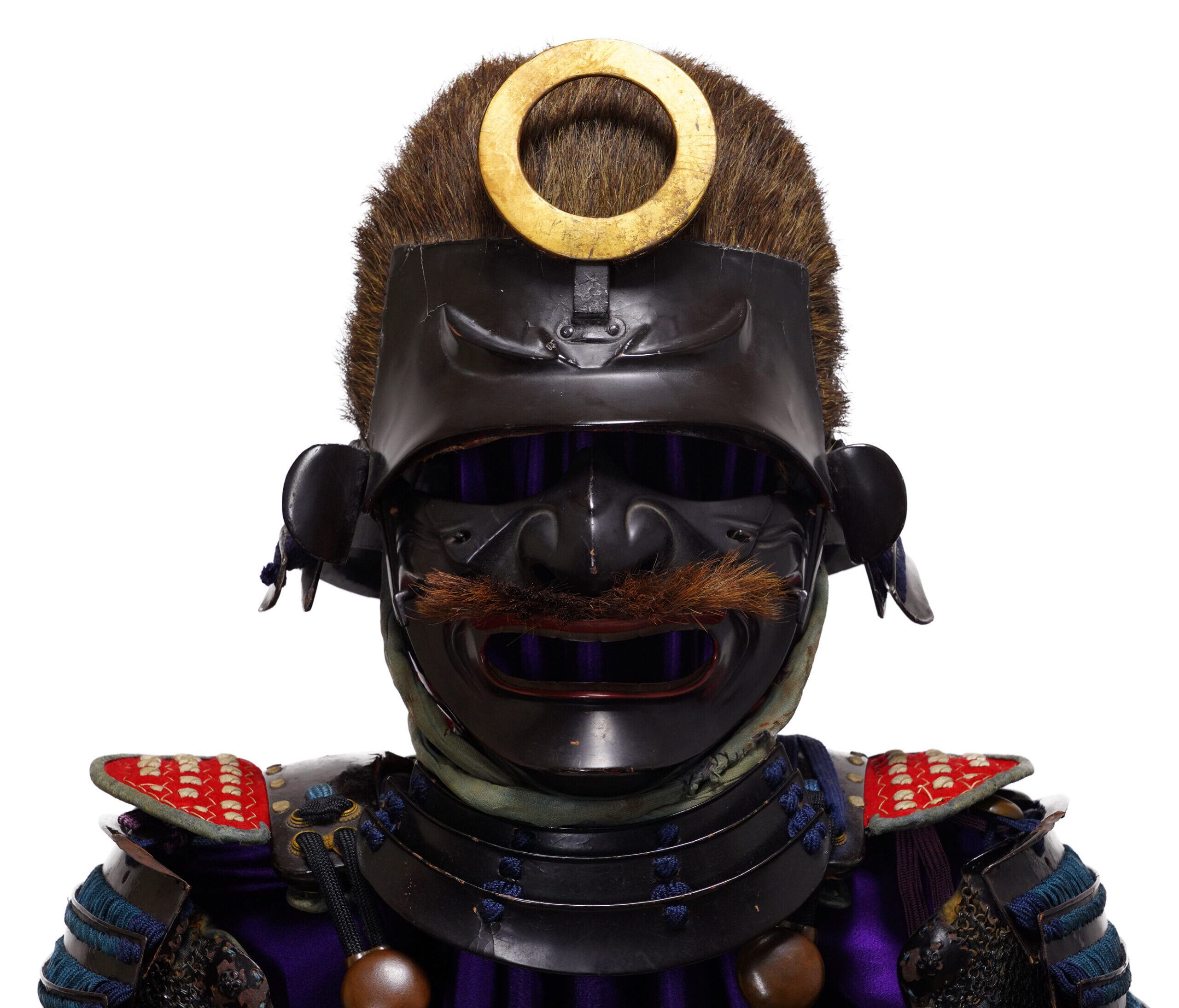
Armor
■Do (cuirass): Okegawa Nimai Do
Nimai Do (二枚胴) is a kind of cuirass for the Tousei Gusoku (当世具足, developed armor style). Nimai Do (二枚胴) was named because Nimai (二枚) means two plates, and Do (胴) means torso in Japanese. Instead of using a large number of small lamellar plates called Kozane (小札), this cuirass used large iron plates riveted.
The name Okegawa (桶側) came from the fact that the shape of this cuirass resembles the Gawa (側, side) of Oke (桶, Japanese wooden tub). The body armor part can be separated into two pieces and connected with a hinge. Generally, a hinge is located on the left side, and you could tighten a cuirass on the right side. The Okegawa Do was relatively easy to make and had high strength; therefore, it is said this style of cuirass became popular in the latter half of the Muromachi (室町, 1336-1573) period.
■Sode (shoulder guards):
Iron Sode (袖) laced with navy threads.

■Kusazuri (skirt of plates attached to the cuirass):
Lacquered iron Kusazuri laced with navy threads. Some Kusazuris that are attached to the front and side of this armor have animal fur on their edges. Together with the design of the Kabuto, it is an element that creates a powerful appearance that seems to be a strong animal, such as a bear.
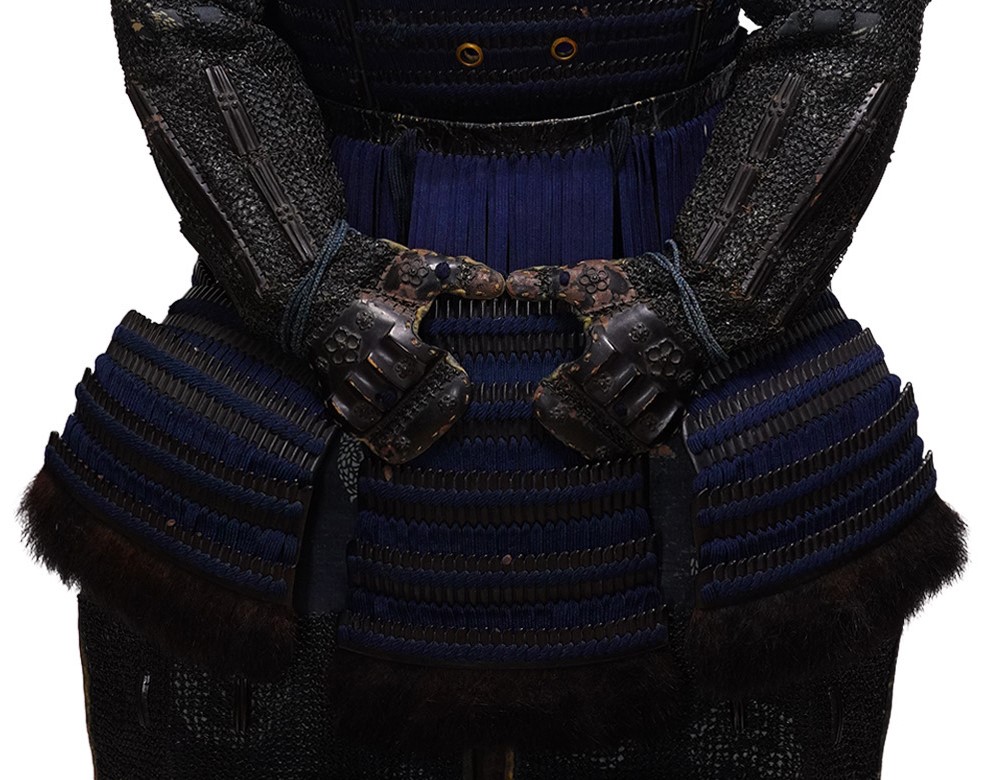
Small parts
■Kote (armored sleeves):
Intricate iron chain mail with silk.

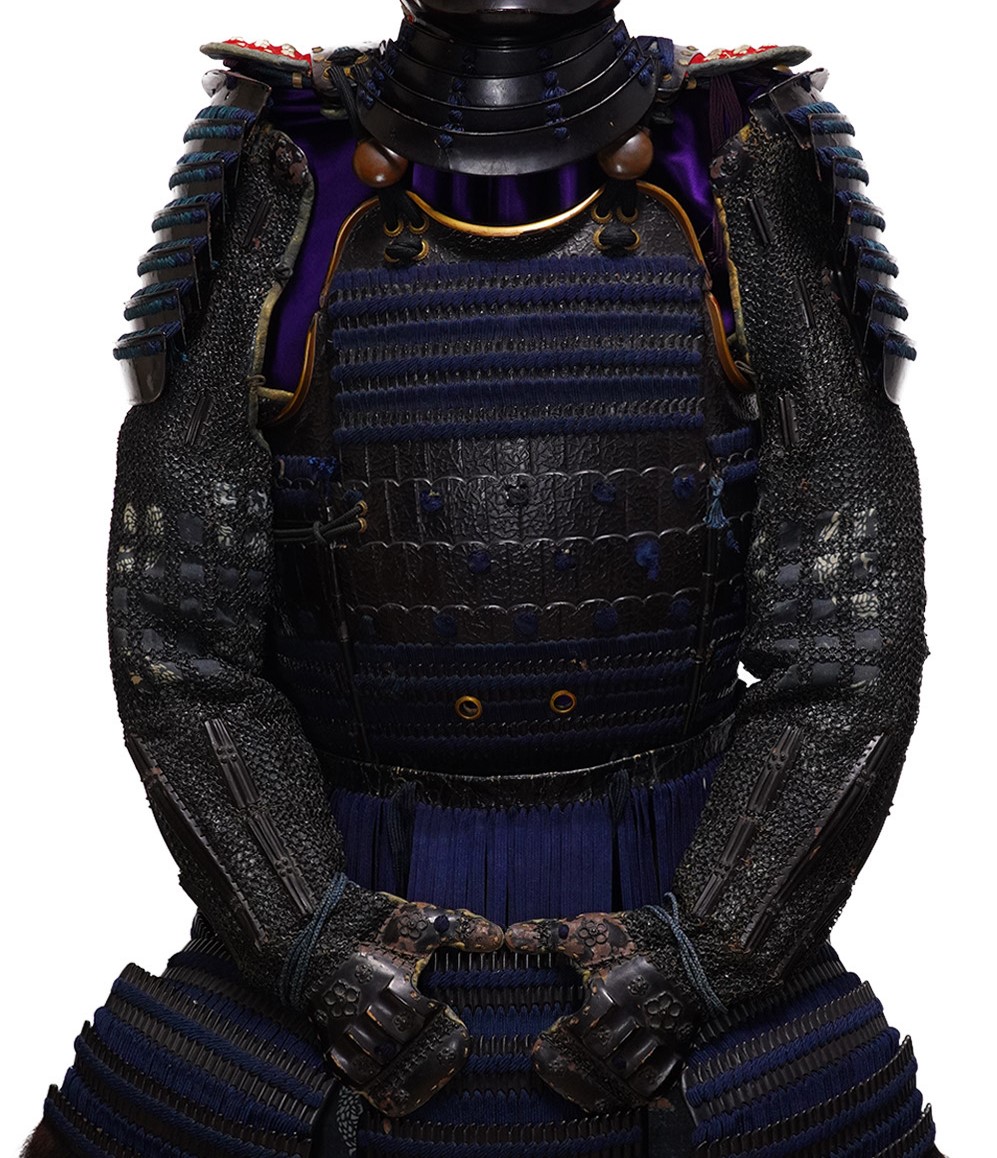
■Haidate (thigh protection):
The Haidate (佩楯) is a thigh guard. Its design is the same as the Kote part.
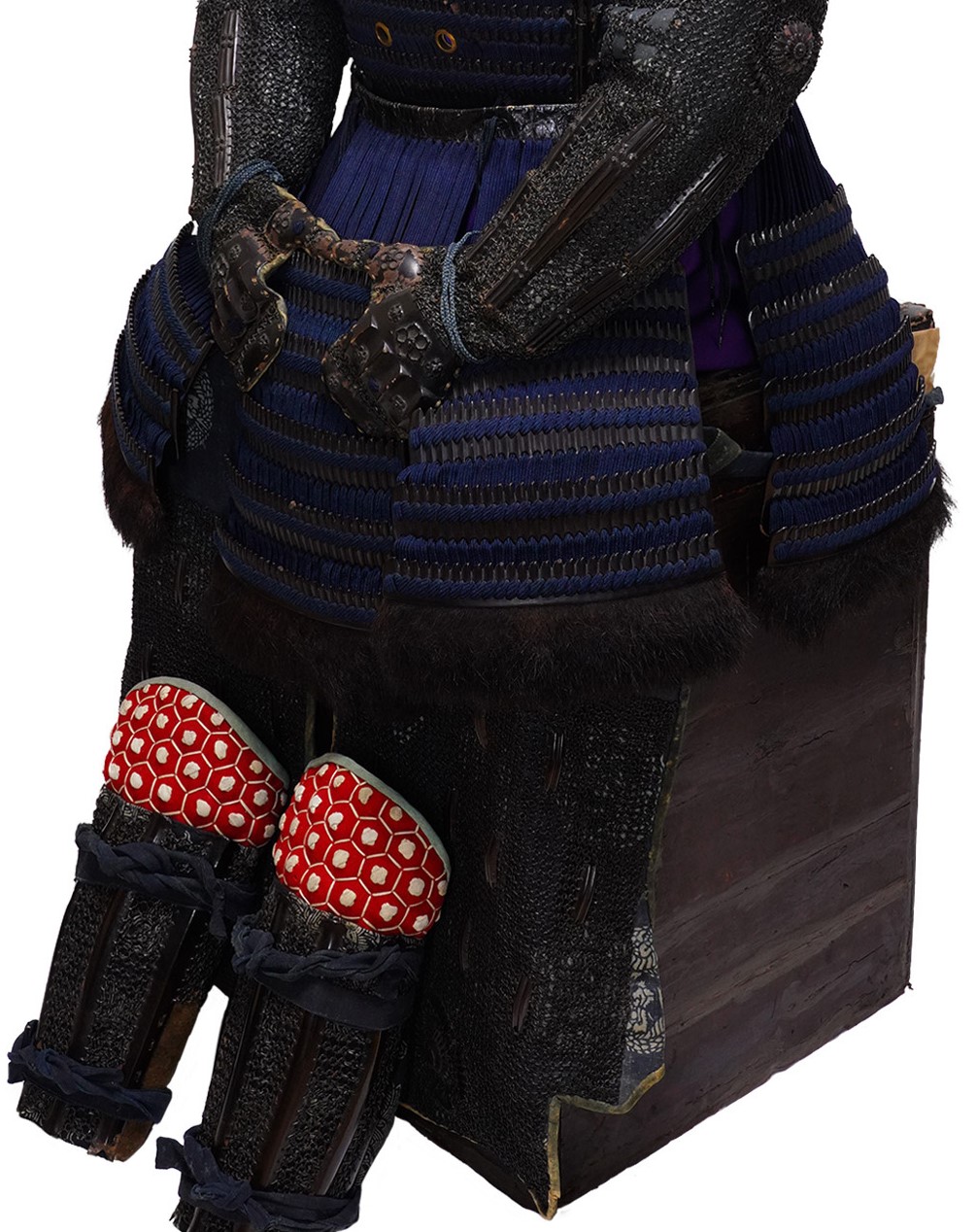
■Suneate (shin guard):
The Kikkou (亀甲, turtle’s shell) pattern is used for the cloth of the Suneate (脛当). It is a continuous geometric pattern connecting regular hexagons up and down. A theory says that this design was brought from China and the Korean Peninsula during the Asuka (飛鳥, 592-710) and Nara (奈良, 710-794) periods. A proverb says turtles live long lives; therefore, turtle and turtle shell patterns represent longevity. In addition, as this continuous hexagonal pattern does not get out of its shape, it is said people wished for eternal prosperity by using this design. This Kikkou pattern-designed red cloth is also used for the neck and shoulder parts.
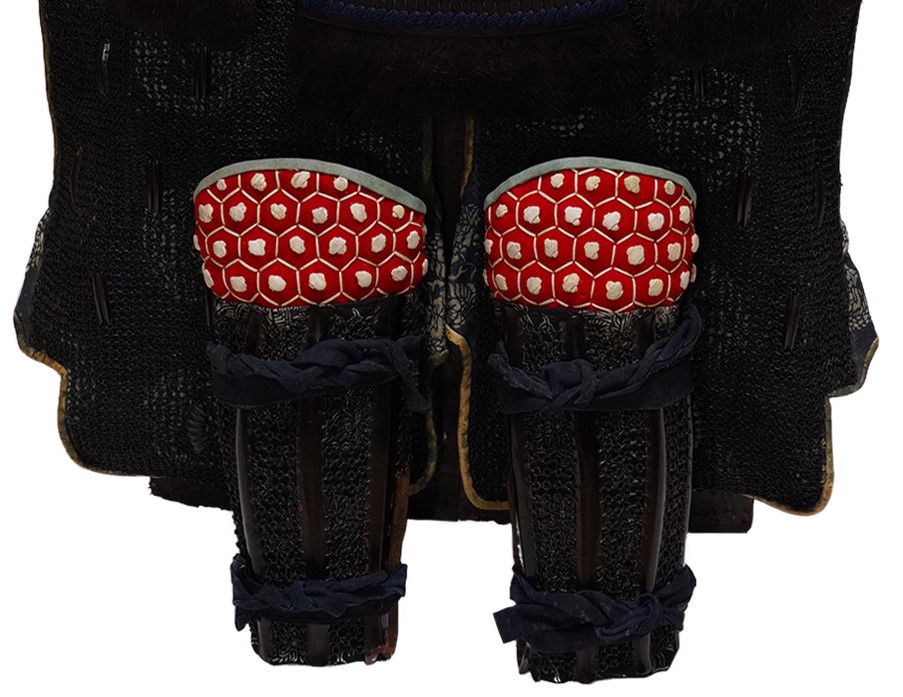
■Gattari (Sashimono holder), Uketsutsu/Sashidutsu (supporter, tube):
If you focus on the back of this armor, you will find that a square-shaped metal frame is attached. It is a gear called the Gattari (合当理) that supports the upper part of the Sashimono (指物, a frag or decorative sign installed at the back of armor). And the Uketsutsu (受筒)/ Sashidutsu (指筒) is a tube to store a Sashimono. Samurai warriors judged their sides and enemies on the battlefields by checking the motifs designed for flags. Especially in group battles with infantry, this method was very effective because they could instantly identify affiliations.
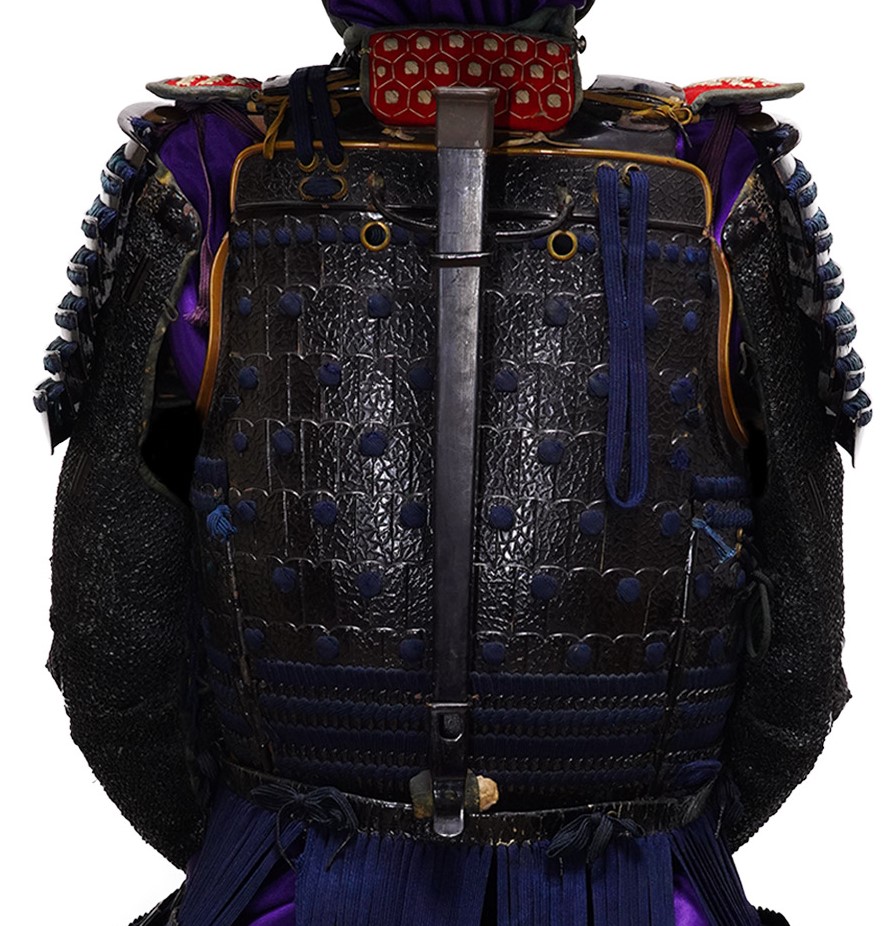
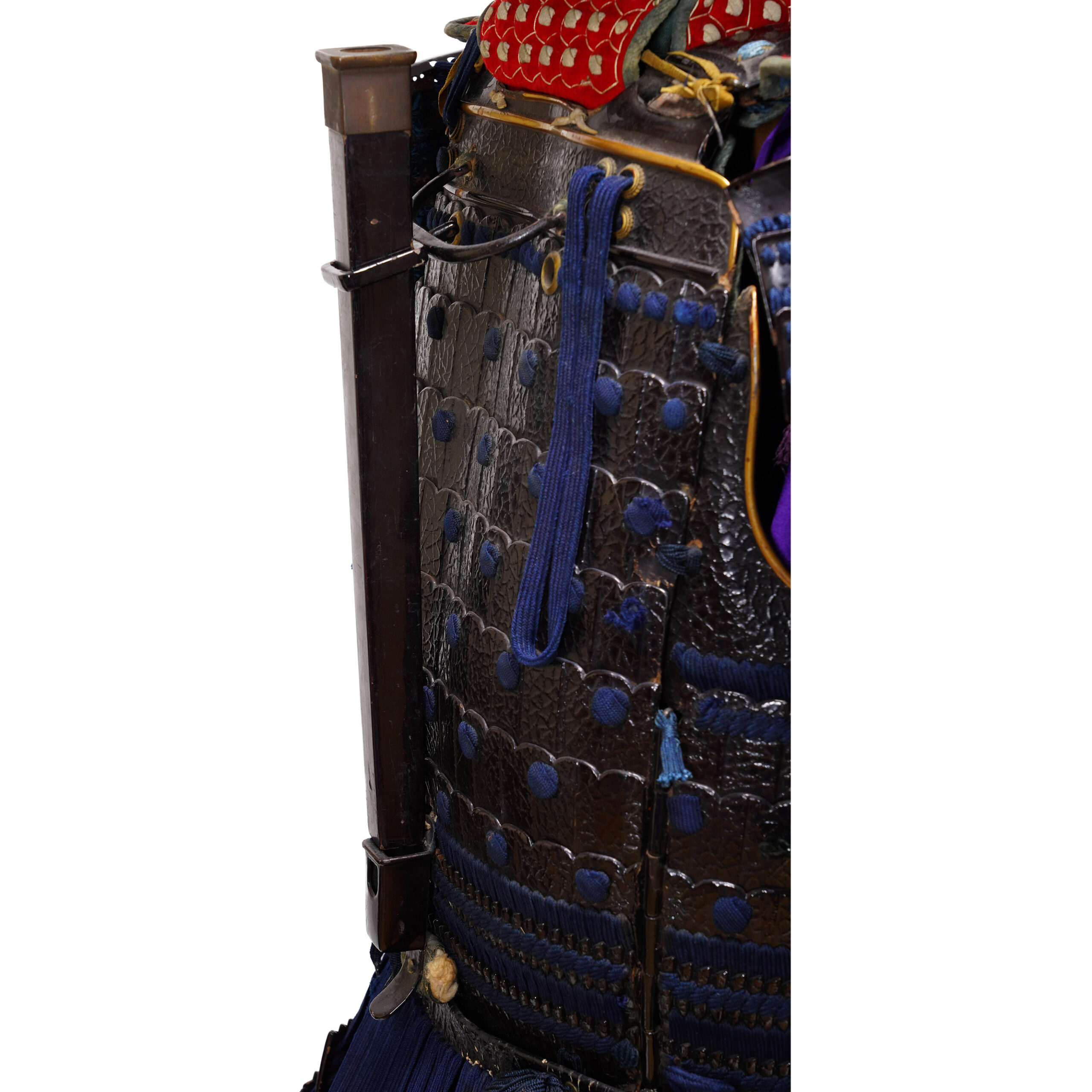
Certification: Tokubetsu Kicho Shiryo Certificate (No. 2001)
On November 6th 2022, this armor was appraised as a Tokubetsu Kicho Shiryo by The Association for the Research and Preservation of Japanese Helmets and Armor, which is the most trusted Japanese armor appraiser in Japan. Tokubestu Kicho Shiryo means special rare article. It is ranked as the third highest of five rankings.
The paper mentions the armor was made in the mid Edo period (late 17th- early 18th century). You can receive this original authentication paper.
An English translation of the certificate is available on request. We won’t charge any additional fee.
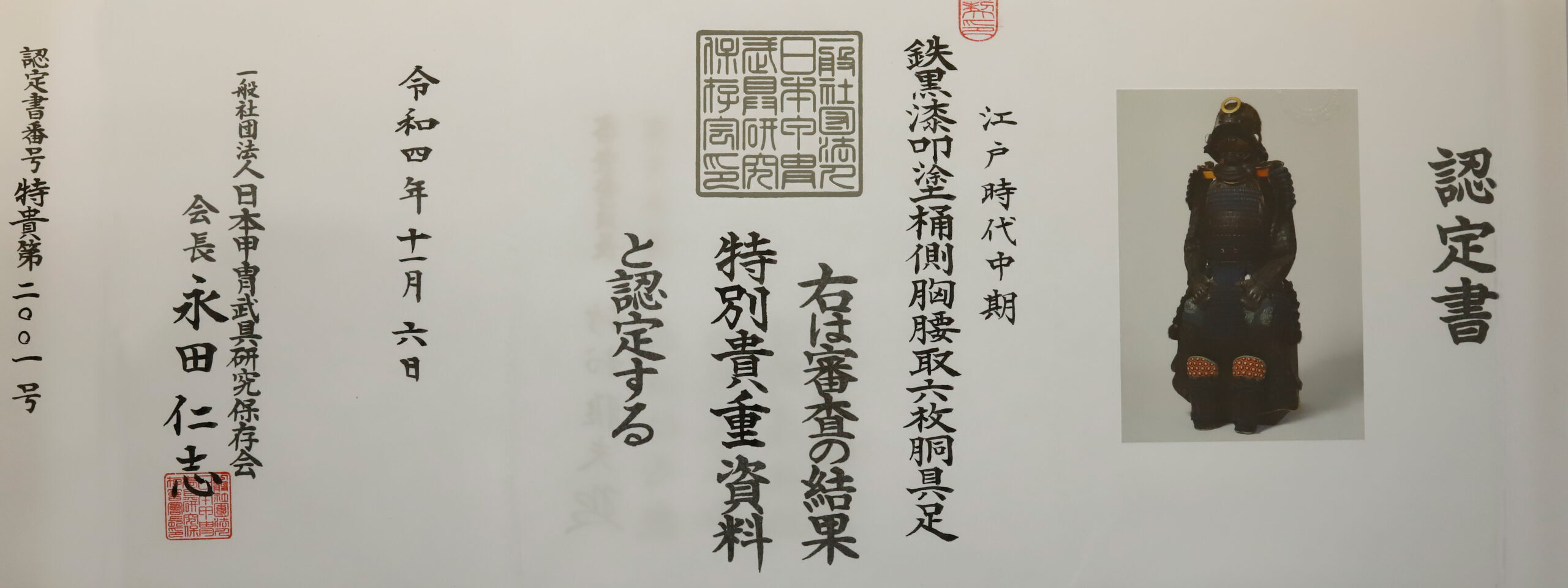
【About us】
Samurai Museum is located in Tokyo, Japan, exhibiting antique artifacts related to the Samurai history. Samurai Museum Shop is the place for those who are interested in Japanese culture and craftsmanship. We deal with antique Samurai swords/armor, traditional crafts made in Japan and so on.
【Antique Japanese Armor and Export process】
After receiving the full payment from you, we will apply for its export permit from the agency for Cultural Affairs to legally export the antique Samurai armor to other countries. It normally takes around 2-4 weeks to receive this permit. And we would like you to expect at least 1-1.5 months for your order to arrive at your given address after you ordered.
【Payment method】
We accept payment through Stripe (Credit card), PayPal, Apple Pay or ChromePay, all of which are secure payment methods. Also, you don’t need to make an account on Stripe for the checkout. If you prefer other payment method, please contact us. You may either pay in JPY, USD, AUD, CAD, EUR, CHF or GBP. The price is set in Japanese Yen. Prices in other currencies are automatically calculated based on the latest exchange rate.

【Shipping duration】
We normally ship via EMS (Express Mail Service) provided by Japan Post. It usually takes at least 5-14 days to deliver the package after you place an order. We offer Free International Shipping as long as we can ship your order by EMS. If you prefer other shipping carriers, please contact us.
We will inform you of the order’s tracking number via email. Please make sure you fill out your valid email address correctly.
*Please keep in mind that due to the spread of COVID-19, there might be possible delays in delivery. If you like to make sure if EMS shipping is available to your country, please contact us.

【How to make sure the condition】
Please keep in mind that what you are going to purchase is an antique item. We uploaded high resolution photos for you to check its condition thoroughly. If you like to see more photos with different angles, please feel free to contact us. We will be happy to send them to you so that you can make informed decision. It is essential for us to know that you are happy with your choice of a sword. and we are prepared to use the best of our ability to serve you.
【How To Contact Us】
Please contact us through email, Facebook Messenger or Live Chat if you have any questions. You can find each icon on the right side of the website. Please click one of them to reach us. We will reply to you within 1-2 business days.
【How To Preserve Antique Samurai Armor】
Dryness, humidity, and bad ventilation might deteriorate the condition of antique Samurai armor. The best temperature to preserve Samurai armor is around 20℃ in Celsius, and humidity should be about 60%. Direct sunlight should be avoided. We recommend storing armors in a room with good ventilation. If you like to display them outside the boxes for a prolonged time, we suggest using a glass case in order for dust not to be accumulated easily. In case you don’t use a glass case, please make sure to regularly dust off from the armor by using a soft brush made of delicate cloth or brush for painting.
If you like to know more about the preservation of this armor, please feel free to contact us.

